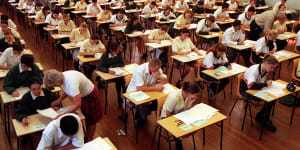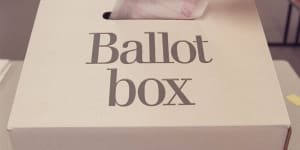
Ever-rising levels of educational attainment - particularly among women – are remodelling the party-political landscape.ROBERT PEARCE
As I’ve mentioned once or twice before,the great political stereotype is that the Liberals are the party of the bosses,while Labor,with its link to the union movement,is the party of the workers. So the people who own and manage the country vote Liberal,whereas the people who do as they’re told vote Labor.
This is the basis for the Liberals’ instinctive confidence that they’re the natural party of government. Such belief is reinforced by their having spent far more of the past 75 years in office than their opponent has.
The better-situated,better-off suburbs in any city tend to vote Liberal,while the inner and outer,less-desirable suburbs vote Labor. Most people living in country areas and voting for the Nationals tend to be on modest incomes,similar to the stereotypical Labor voter.
The owners and managers tend to be pretty happy with the world as it is,whereas those further down the pecking order,with less wealth and less income,can always think of things they’d like to see changed. The Liberals defend the status quo,while Labor is the party of “reform”.
This is the basis for the standard perception of politics as a conflict between the privileged Right and the discontented Left.
“Rich,educated professionals swung 11 to 12 per cent against the Coalition,while the country’s working poor - the fifth of polling booths paying the lowest rent,earning the lowest incomes and with the least skills - swung only 3 to 4 per cent against it.”
But what if this conventional setup was changing - being undermined – before our eyes? We all know that strange things happened in last month’s federal election. As usual,we’ve tried to understand these from the top down. How the parties’ share of the national vote changed,then looking by state and even at the 151 electorates.
But Luke Metcalfe,founder of the property and data analytics consultancy,Microburbs,(and,as it happens,a nephew of mine),has done a bottom-up,more “granular” analysis.
He’s taken the Australian Electoral Commission’s voting figures by polling booth and matched them with all the detailed demographic information for corresponding small statistical areas in the 2016 census. They’re not a perfect fit,but they’re a good guide.

The trend from the 2019 federal election,where the Coalition’s support base has shifted towards poorer,less-skilled,less-educated people born in Australia,has continued.ANDREW MEARES
Metcalfe finds that “we’re seeing a continuation of the trend in the[2019] federal election,where the Coalition’s support base is shifting towards poorer,less-skilled,less-educated people born in Australia”.
When Labor lost in 2019,many people noticed the swing against Labor in regional mining seats in the NSW Hunter Valley and Central Queensland. What few noticed was the swingto Labor in many safe Liberal seats.
This time,Metcalfe says,rich,educated professionals swung 11 to 12 per cent against the Coalition,while the country’s working poor - the fifth of polling booths paying the lowest rent,earning the lowest incomes and with the least skills - swung only 3 to 4 per cent against it.
As we know,much of this shift away from the Liberals came via the teal independents in Liberal heartland seats in Melbourne,Sydney and Perth. The teal seats’ most dominant characteristic was their high levels of “educational attainment”.
Unsurprisingly,income and education are highly correlated. But Metcalfe says it’s education,not income,that’s doing the driving.
Many people think they’ve detected in recent election results a growing divide between city and country in Australia,but also in Britain and America. But maybe it’s more about the better-educated concentrating in the big cities – where the best-paying jobs are – leaving the less well-educated in outer suburbs or back in country towns,feeling the world has changed in ways they don’t like and thinking of voting One Nation.
Some political scientists think voters in the rich economies are dividing between the globalists and the nationalists. In the same vein,David Goodhart famously explained Brexit as a battle between those who could live and work “anywhere” and those who had to live “somewhere”.
But it still gets down to education and the way ever-rising levels of educational attainment - particularly among women – are remodelling the party-political landscape.
Take climate change. The better educated you are,the more likely you are to accept the science,believe we should be acting,and not be worried about either losing your job in the mine or paying a bit more for power.
Wouldn’t it be funny if the party of the workers became the party of the well-educated,while the party of the bosses became the party of the battlers?
I can’t see that happening,it’s too incongruous. There’s no way the Coalition could get enough seats without the Liberals’ leafy heartland. But it will need radical policy change to get the well-educated back into the fold,or into bed with the Neanderthal Nationals.
The Business Briefing newsletter delivers major stories,exclusive coverage and expert opinion..